
David Emanuel Twiggs was an American career army officer, who served during the War of 1812, the Black Hawk War, and Mexican–American War.
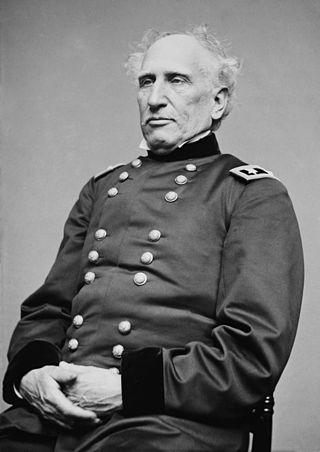
Silas Casey was a career United States Army officer who rose to the rank of major general during the American Civil War.
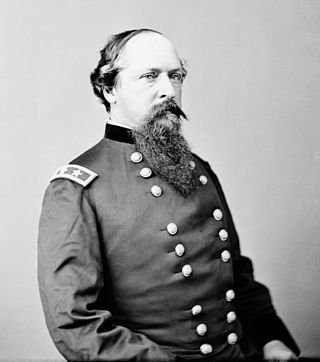
James Brewerton Ricketts was a career officer in the United States Army, serving as a Union Army general during the Civil War.

James Meech Warner was a New England manufacturer and a brevet brigadier general in the Union Army during the American Civil War.

Daniel Ruggles was a Brigadier General in the Confederate States Army during the American Civil War. He was a division commander at the Battle of Shiloh.

Kenner Garrard was a brigadier general in the Union Army during the American Civil War. A member of one of Ohio's most prominent military families, he performed well at the Battle of Gettysburg, and then led a cavalry division in the army of Major General William T. Sherman during the Atlanta Campaign. He developed a reputation for personal bravery and was cited for gallantry at the Battle of Nashville as an infantry division commander.

John Milton Brannan was an American military officer who served with distinction in the Mexican–American War as a United States Army artillery officer and as a Union Army brigadier general of United States Volunteers in the American Civil War. Brannan held command of the Department of Key West at Fort Zachary Taylor, Florida, part of the Union effort to hold federal installations within Confederate territories early in the war. Later, and most notably, he served as a division commander of the Union XIV Corps at the Battle of Chickamauga in 1863.

James Madison Robertson was a career United States Army artillery officer who commanded the First Brigade of U.S. Horse Artillery during the American Civil War.

Joseph Haydn Potter was a career soldier from the state of New Hampshire who served as a general in the Union Army during the American Civil War. He was twice a prisoner of war and was cited for gallantry on multiple occasions.
James Totten was a career American soldier who served in the United States Army and retired from active service in 1870 as the Assistant Inspector General. He served as an officer in the Union Army and Missouri militia general during the American Civil War. He may be related to Chief Engineer of the U.S. Army Brigadier General Joseph Totten.
Isaac Van Duzen Reeve was a soldier in the United States Army during the 19th century. He rose to the rank of colonel, and retired a few years after his service in the American Civil War.
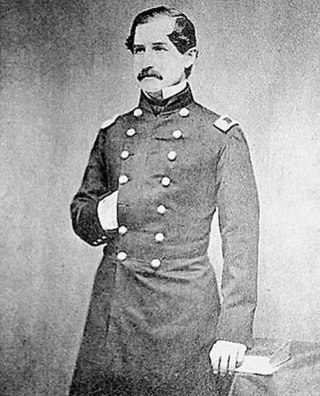
Abraham Myers was a military officer in the United States and Confederate States Armies.
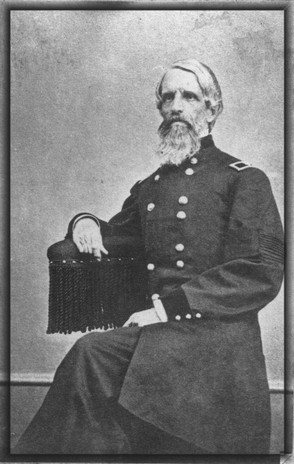
William Hoffman (1807–1884) was a 19th-century officer in the United States Army. The West Point graduate was involved in the Black Hawk War, Seminole Wars, Mexican–American War and the American Civil War. During the Civil War he served as the Commissary-General of Prisoners and set policy for the treatment and release of prisoners.
James Vote (Voty) Bomford was a soldier in the United States military and a Union officer in the Civil War, and retired with the rank of Brigadier General. He graduated from Norwich University in 1828 and from West Point in 1832, and was a colonel in the 8th United States Infantry. Bomford was twice wounded in action at Perryville and served in the Mexican–American War. His father was George Bomford, an inventor and military officer in the United States Army, who invented the Columbiad cannon. His son, also named George, was expelled but allowed to retire following his involvement in the Eggnog Riot at West Point. George did enter the military and retired as a captain.
Joseph Nelson Garland Whistler was a career United States Army officer. He served in the Mexican–American War and received a brevet appointment for distinguished service in the Battle of Contreras and the Battle of Churubusco. At the beginning of the American Civil War, Whistler was among the U.S. Regular Army officers taken prisoner by Confederates in Texas in April 1861 and paroled but was not exchanged until August 15, 1862. In 1863, he became colonel of the 2nd New York Heavy Artillery Regiment. He received a promotion and four brevet appointments in the regular army for his service during the Overland Campaign, specifically the Battle of North Anna, and the Siege of Petersburg, specifically the Second Battle of Petersburg. He was nominated on January 13, 1866 and confirmed on March 12, 1866 for appointment to the grade of brevet brigadier general of volunteers, to rank from March 13, 1866. He retired in on October 19, 1886 as colonel of the 15th U.S. Infantry Regiment.

John Lane Gardner (1793–1869) served in the U.S. Army eventually achieving the rank of brevet Brigadier General after serving in the American Civil War having also served in the War of 1812, the Second Seminole War and the Mexican–American War. After Gardner retired from military service he devoted time to recruiting for the Army.
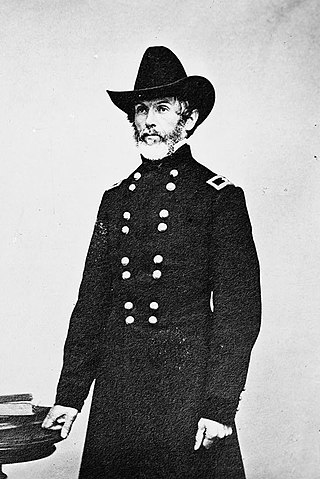
Henry Walton Wessells was an American brigadier general, best known for his service during the American Civil War, including his surrender of Union fortifications during the Battle of Plymouth in 1864.
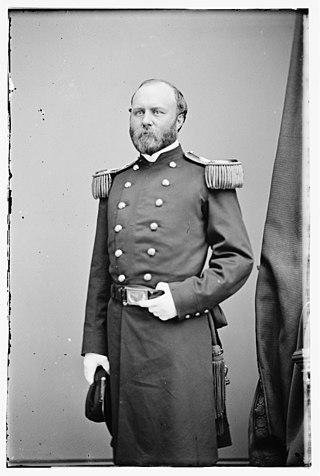
Henry Boynton Clitz was a career United States Army officer who served with distinction during the Mexican–American and Civil wars, for which he received brevet appointments. After his release as a prisoner of war from the Confederate Libby Prison in Richmond, Virginia, on July 17, 1862, Clitz was Commandant of Cadets at the United States Military Academy at West Point, New York, from October 23, 1862, to July 4, 1864. He was nominated and confirmed for appointment as a brevet brigadier general in the Regular Army on March 2, 1867, to rank from March 13, 1865. He retired from the Regular Army as a colonel of the 10th Infantry Regiment on July 1, 1885. Clitz, whose deteriorating mental state had been noticed by relatives for several months, disappeared at Niagara Falls, New York, and was presumed drowned on October 30, 1888.
Thomas Grimke Rhett was a graduate of the United States Military Academy at West Point, New York, and a United States Army officer who served from July 1, 1845, to April 1, 1861. He served in the Mexican-American War in 1847–1848. Rhett was awarded a brevet appointment as captain for gallantry in the defense of Puebla, Mexico, during the Siege of Puebla, October 12, 1847. After his resignation from the U.S. Army, April 1, 1861, he was appointed a brigadier general in the South Carolina Militia but did not serve in that office. He was a staff officer in the Confederate States Army in the Eastern Theater of the American Civil War from April 1861 until May 31, 1862. He first served as voluntary aide-de-camp to General Pierre G. T. Beauregard and then major from April to July, 1861. Rhett then served as chief of staff to Beauregard's successor, General Joseph E. Johnston. After Johnston was wounded on May 31, 1862, and was succeeded in command by General Robert E. Lee, Rhett was transferred to the District of Arkansas in Confederacy's Trans-Mississippi Department where he served as chief of ordnance. From April 1863 until the end of the war in 1865, he served as chief of artillery in the Trans-Mississippi Department. From 1865 to 1873, he served as a colonel of ordnance in the Egyptian Army.

Louis Douglas Watkins was a soldier in the Union Army during the American Civil War.














